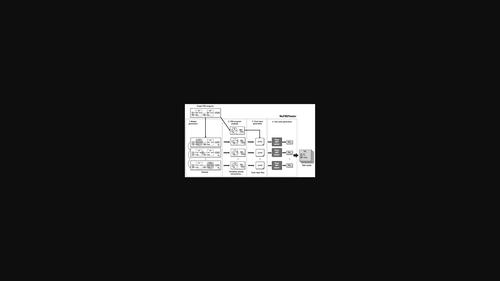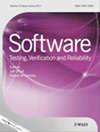MuFBDTester: A mutation‐based test sequence generator for FBD programs implementing nuclear power plant software
IF 1.2
4区 计算机科学
Q3 COMPUTER SCIENCE, SOFTWARE ENGINEERING
引用次数: 3
Abstract
Function block diagram (FBD) is a standard programming language for programmable logic controllers (PLCs). PLCs have been widely used to develop safety‐critical systems such as nuclear reactor protection systems. It is crucial to test FBD programs for such systems effectively. This paper presents an automated test sequence generation approach using mutation testing techniques for FBD programs and the developed tool, MuFBDTester. Given an FBD program, MuFBDTester analyses the program and generates mutated programs based on mutation operators. MuFBDTester translates the given program and mutants into the input language of a satisfiability modulo theories (SMT) solver to derive a set of test sequences. The primary objective is to find the test data that can distinguish between the results of the given program and mutants. We conducted experiments with several examples including real industrial cases to evaluate the effectiveness and efficiency of our approach. With the control of test size, the results indicated that the mutation‐based test suites were statistically more effective at revealing artificial faults than structural coverage‐based test suites. Furthermore, the mutation‐based test suites detected more reproduced faults, found in industrial programs, than structural coverage‐based test suites. Compared to structural coverage‐based test generation time, the time required by MuFBDTester to generate one test sequence from industrial programs is approximately 1.3 times longer; however, it is considered to be worth paying the price for high effectiveness. Using MuFBDTester, the manual effort of creating test suites was significantly reduced from days to minutes due to automated test generation. MuFBDTester can provide highly effective test suites for FBD engineers.

MuFBDTester:一个基于突变的测试序列生成器,用于实施核电站软件的FBD程序
功能框图(FBD)是可编程逻辑控制器(plc)的标准编程语言。plc已被广泛用于开发安全关键系统,如核反应堆保护系统。有效地测试此类系统的FBD程序是至关重要的。本文介绍了一种利用FBD程序的突变测试技术和开发的工具MuFBDTester的自动化测试序列生成方法。给定一个FBD程序,MuFBDTester分析该程序并根据突变操作符生成突变程序。MuFBDTester将给定的程序和突变体转换为可满足模理论(SMT)求解器的输入语言,以派生出一组测试序列。主要目标是找到能够区分给定程序和突变体结果的测试数据。我们用包括实际工业案例在内的几个例子进行了实验,以评估我们的方法的有效性和效率。在控制测试规模的情况下,结果表明基于突变的测试套件比基于结构覆盖的测试套件在统计上更有效地揭示人工故障。此外,基于突变的测试套件比基于结构覆盖的测试套件检测到更多在工业程序中发现的再现错误。与基于结构覆盖率的测试生成时间相比,MuFBDTester从工业程序生成一个测试序列所需的时间大约长1.3倍;然而,人们认为为高效率付出代价是值得的。使用MuFBDTester,由于自动化的测试生成,创建测试套件的手工工作从几天显著减少到几分钟。MuFBDTester可以为FBD工程师提供高效的测试套件。
本文章由计算机程序翻译,如有差异,请以英文原文为准。
求助全文
约1分钟内获得全文
求助全文
来源期刊

Software Testing Verification & Reliability
工程技术-计算机:软件工程
CiteScore
3.70
自引率
0.00%
发文量
34
审稿时长
>12 weeks
期刊介绍:
The journal is the premier outlet for research results on the subjects of testing, verification and reliability. Readers will find useful research on issues pertaining to building better software and evaluating it.
The journal is unique in its emphasis on theoretical foundations and applications to real-world software development. The balance of theory, empirical work, and practical applications provide readers with better techniques for testing, verifying and improving the reliability of software.
The journal targets researchers, practitioners, educators and students that have a vested interest in results generated by high-quality testing, verification and reliability modeling and evaluation of software. Topics of special interest include, but are not limited to:
-New criteria for software testing and verification
-Application of existing software testing and verification techniques to new types of software, including web applications, web services, embedded software, aspect-oriented software, and software architectures
-Model based testing
-Formal verification techniques such as model-checking
-Comparison of testing and verification techniques
-Measurement of and metrics for testing, verification and reliability
-Industrial experience with cutting edge techniques
-Descriptions and evaluations of commercial and open-source software testing tools
-Reliability modeling, measurement and application
-Testing and verification of software security
-Automated test data generation
-Process issues and methods
-Non-functional testing
 求助内容:
求助内容: 应助结果提醒方式:
应助结果提醒方式:


